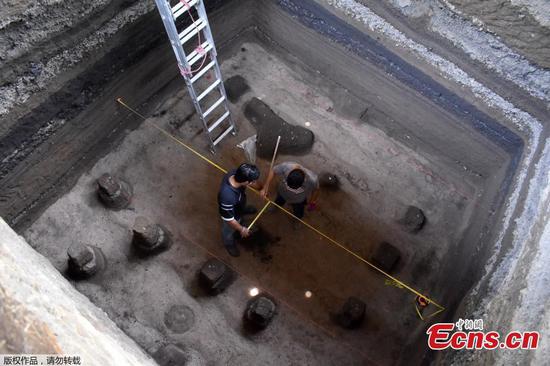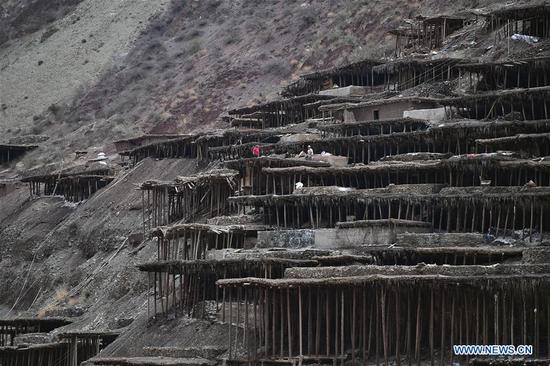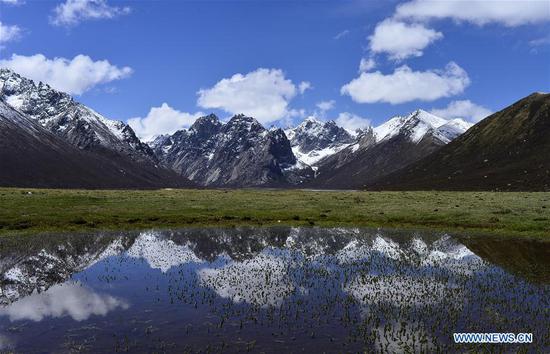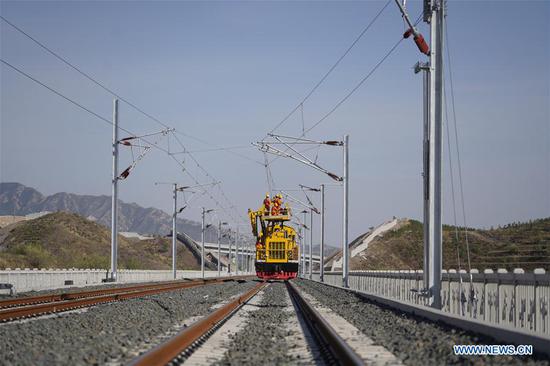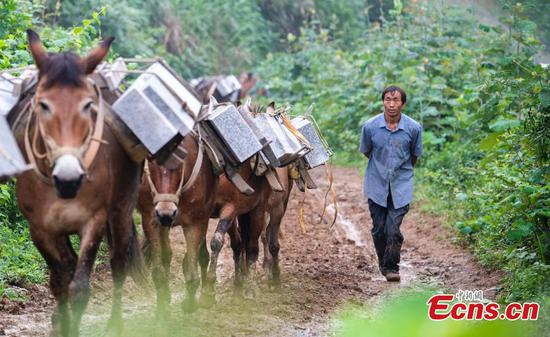
Licorice roots are planted in the Kubuqi Desert, Inner Mongolia autonomous region, in an effort to bind the sand. (LIU WENHUA/CHINA NEWS SERVICE)
Integrated forestation
According to the National Forestry and Grassland Administration, the amount of land in China lost to desertification each year has fallen to 2,400 sq km, compared with expansion of about 10,400 sq km annually late last century.
The area of sandy land has fallen to about 1,900 sq km each year, in contrast with an annual expansion of about 3,400 sq km late last century.
Liu Dongsheng, deputy head of the administration, said that thanks to the success of desert control and forestation efforts nationwide, the country has seen a "historical reversal from sand forcing humans to retreat".
"There are plans for all the remediable sandy land in the country to be restored by 2050," Liu said.
"We have often vowed to conquer the desert, but this too radical. It is very hard to transform the desert completely, because it is a landscape much like mountains and grassland that has existed long before humanity. What we can do is follow nature's laws, and control the harm it causes and use its advantages to serve the people."
Economic interests have always been a key factor fueling forestation. But experts said every yuan the government spends on this is worthwhile, as the efforts have not only transformed farmers' incomes, but provided an environmental bonus for the whole country.
In addition to these efforts, China designated March 12 as national Tree Planting Day, when voluntary tree-planting activities are organized every year.
State leaders invariably take part in this national campaign every year, and it is estimated that over the past four decades more than 70 billion trees have been planted.
Statistics show that about 25 percent of new forest that appeared globally from 2000 to last year was in China. The country has the world's largest area of artificial forest coverage, reflecting the progress that has been made.
Over the past 40 years, the nation's forest coverage has risen from 115 million hectares to 208 million hectares, and the proportion of its forest coverage has expanded from 12 percent to just over 21.5 percent.
Zhang Jianlong, minister of the National Forestry and Grassland Administration, said, "China is considering a new round of large-scale forestation to continue the momentum in an attempt to raise forest coverage to 23.04 percent by 2020, 26 percent by 2035 and to 30 percent - the global average - by the middle of this century."
The forestation projects will be integrated into other related work, such as poverty alleviation, urban construction, rural development, pollution control, environmental restoration and ecological preservation, which is also in line with the public's need for a better environment.
The country will expand its government-funded forestation projects, improve the overall quality of its forests, attract more funds to drive these efforts, develop professional enterprises in the field of environmental restoration, and further expand urban, suburban and countryside green space, Zhang Jianlong said.










